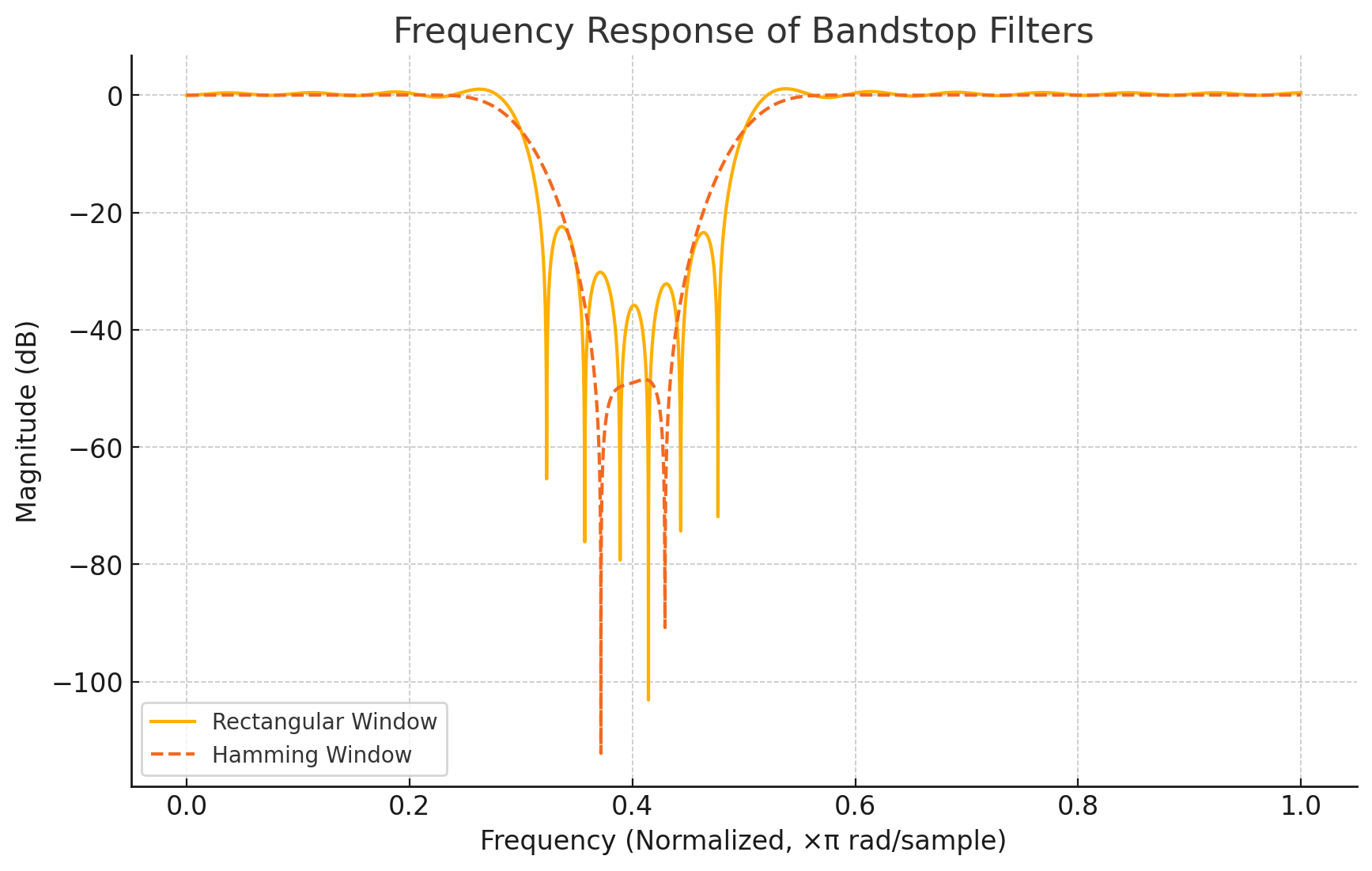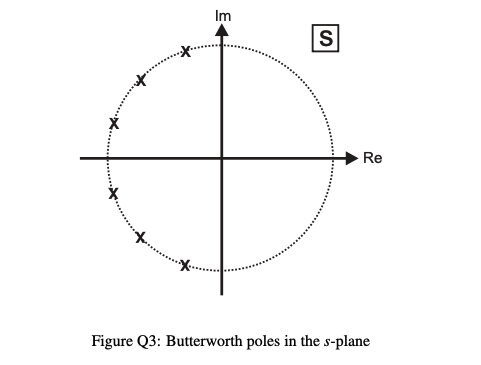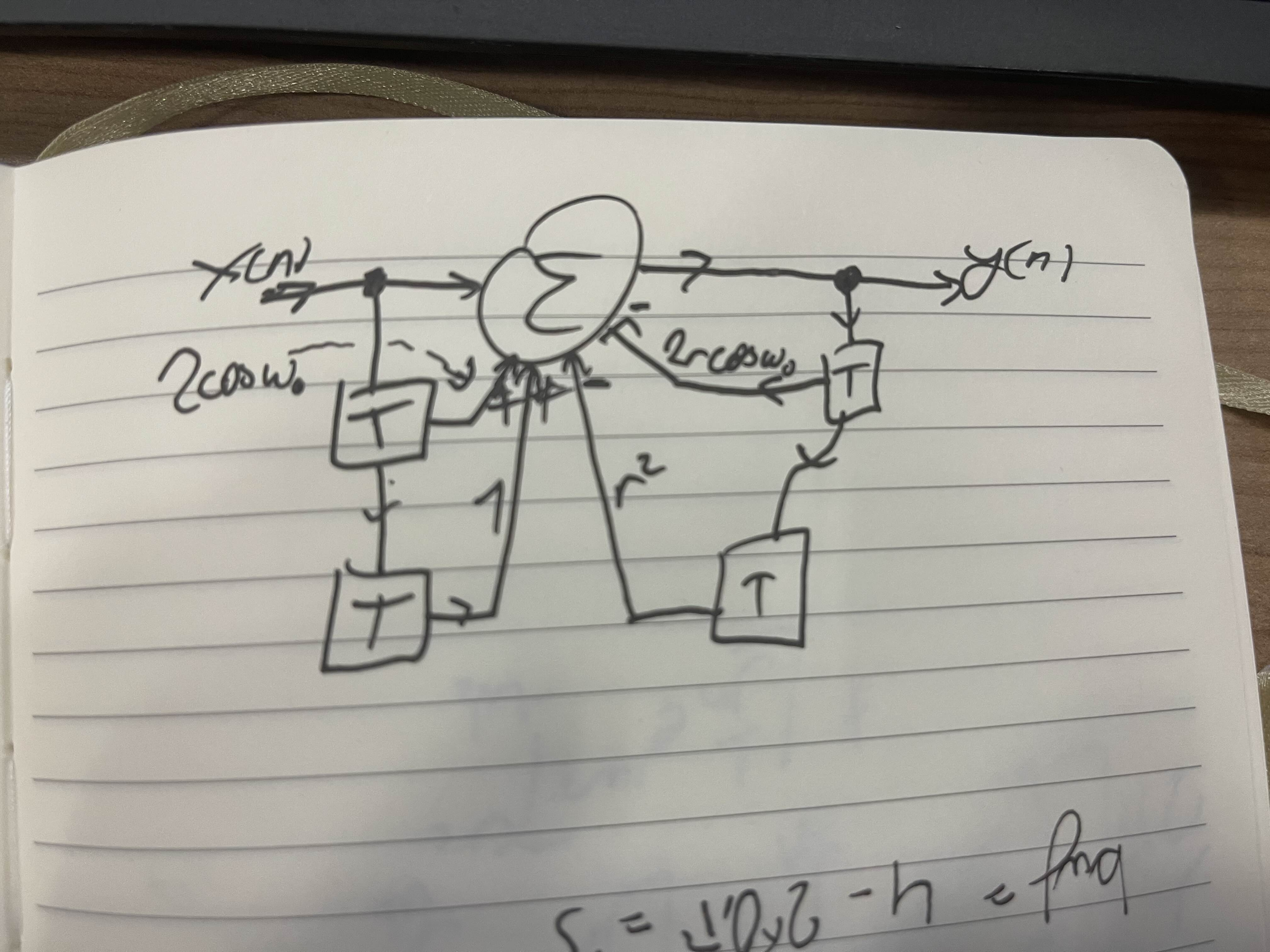Formulas
Euler
IIR Formulas
Code
DFT Python
N = len(signal)
X = np.zeros(N)
for k in range(N):
for n in range(N):
X[k] += signal[n] * np.exp(-2j * np.pi * k * (n/N))IDFT
N = len(signal)
x = np.zeros(N)
for n in range(N):
for k in range(N):
x[n] += X[k] * np.exp(2j * np.pi * k * (n/N))
x /= NGetting a WAV file (assuming 16bit):
input_wav = wavfile.get("file.wav")
signal = input_wav / (2**15)Making a WAV file (assuming 16 bit):
signal = ...
output_wav = signal * (2**15)Plotting DB Frequency Pseudocode:
# assuming f_sig is already the dft of a signal
f_sig = X[:N//2] # take only first half of frequency response
f_db = 20 * np.log10( np.abs(f_sig) )
freq_axis = [idx * f_s / N for idx in range(N//2)]
plot(y=f_db,x=freq_axis)Slicing and Filters:
"""
Your cutoff frequency can be translated into a sample number using
cutoff = int(f_c / f_s * N)
"""
f_s = 10000
N = len(signal)
f_low = 1000
f_high = 3000
cutoff_low = int(f_low / f_s * N)
cutoff_high = int(f_high / f_s * N)
# Highpass
signal[:cutoff_low] = 0 # Up until cutoff = 0
signal[-cutoff_low:] = 0 # Inverse of line above, just the aliased version
# 0 1 2 3 4 5 6 7 8 9 X <- Initial
# 2 3 4 5 6 7 8 9 X <- Line 1
# 2 3 4 5 6 7 8 <- Line 2
# Lowpass
signal[cutoff_high:N//2] = 0
signal[N//2:-cutoff_high] = 0
# 0 1 2 3 4 5 6 7 8 9 X <- Initial
# 0 1 2 5 6 7 8 9 X <- Line 1
# 0 1 2 8 9 X <- Line 2
# Bandstop
signal[cutoff_low:cutoff_high] = 0
signal[-cutoff_high:-cutoff_low] = 0
# 0 1 2 3 4 5 6 7 8 9 X <- Initial
# 0 4 5 6 7 8 9 X <- Line 1
# 0 4 5 6 X <- Line 2
# Bandpass is just highpass + lowpass
# With bounds around target
bound = 50
cutoff_bound = int(bound / f_s * N)
# Lowpass Ex:
signal[:cutoff_low+bound] = 0
signal[-cutoff_low-bound:] =0
FIR Knowledge
Where you use either the cutoff frequency, or the bandwidth of the filter
FIRs don’t necessarily perform convolutions as there is a finite range as opposed to the range of convolutions
Calculate frequency response: Sub in for Example:

IIR Knowledge
 Poles on S-Plane Right to Left, in groups of 2, to form a chain of second order filters
Poles on S-Plane Right to Left, in groups of 2, to form a chain of second order filters
Higher Damping on Window is Wider Transition from stop to passband. Blackman highest, Hamming better for lower damping
When asked on a transfer like this:
In this example, r affects the stability and notch width and attenuation depth. affects the centre frequency of the notch, and therefore the cutoffs too
DATAFLOW:
